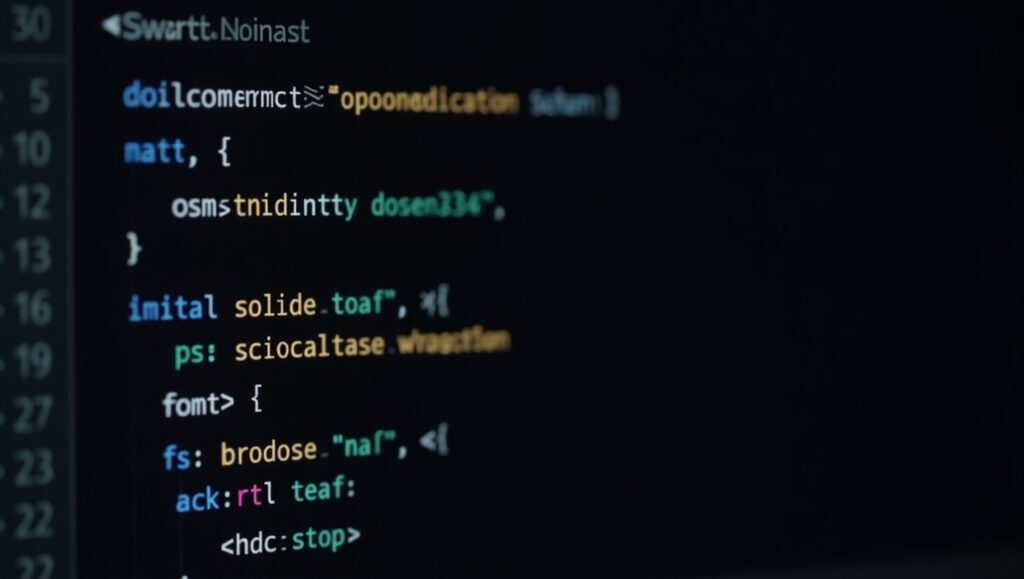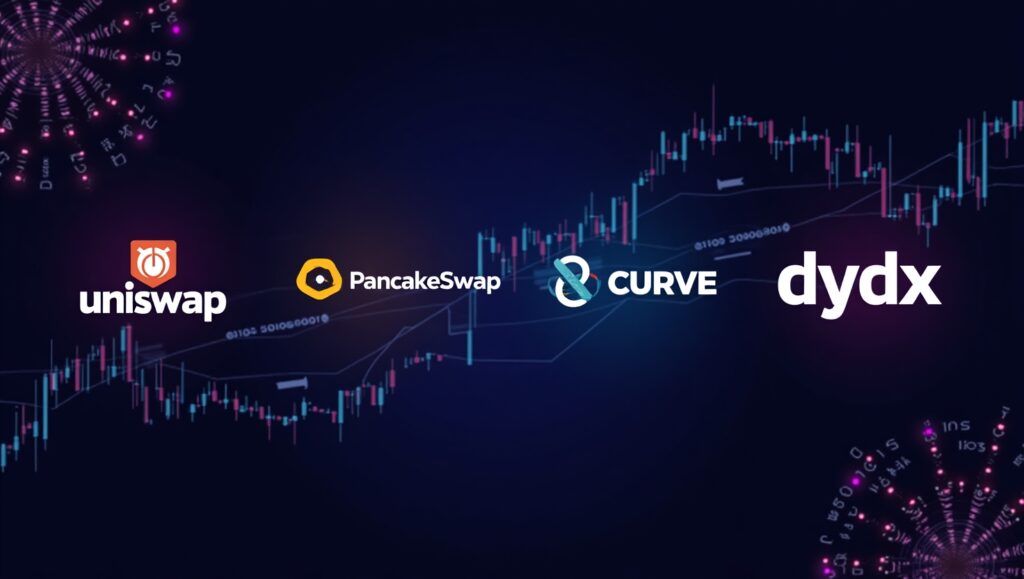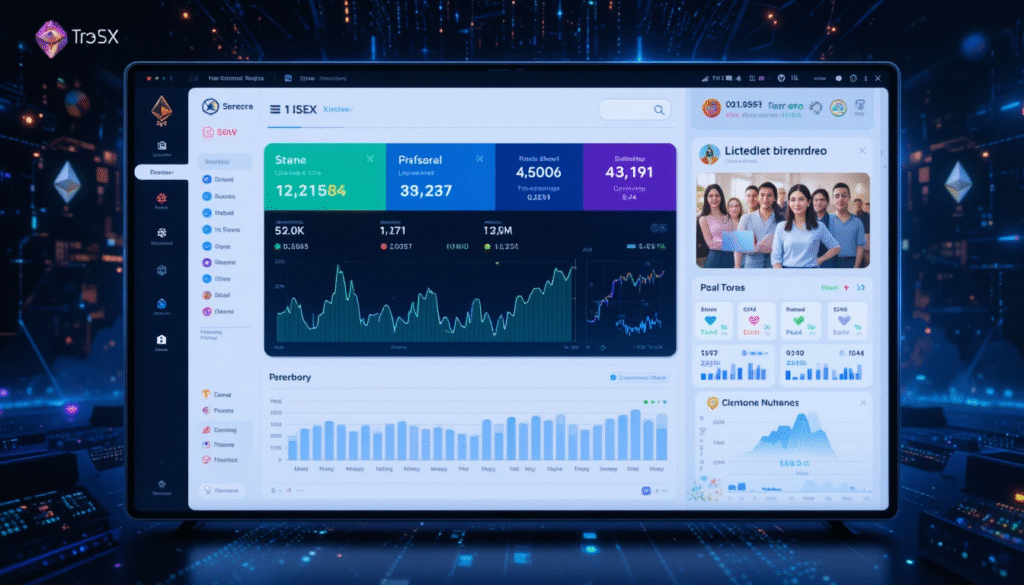Introduction
Decentralized Exchanges (DEXs) have become the backbone of Web3 and DeFi (Decentralized Finance) ecosystems. With billions of dollars flowing through platforms like Uniswap, PancakeSwap, and SushiSwap, building a DEX has become an attractive opportunity for developers, entrepreneurs, and blockchain enthusiasts.
This step-by-step guide will help you understand what a decentralized exchange is, how it works, and how to create your own secure and scalable DEX platform — even with limited resources.
What is a Decentralized Exchange (DEX)?
A Decentralized Exchange allows users to trade cryptocurrencies without an intermediary. Unlike centralized exchanges like Binance or Coinbase, a DEX operates on smart contracts, directly connecting wallets and enabling peer-to-peer crypto swaps.
Core Characteristics of a DEX:
- Non-custodial (users control their private keys)
- Trustless (powered by blockchain code)
- Permissionless (open to anyone)
- Automated Market Maker (AMM) or Order Book based

Popular DEX Models
Before you build, choose your exchange model:
🔁 1. AMM-Based DEX
- Most popular
- Uses liquidity pools for trading (e.g., Uniswap)
- No order book required
📊 2. Order Book DEX
- Matches buyer and seller orders (e.g., dYdX)
- Closer to traditional trading platforms
- Requires more complex backend logic
🧬 3. Hybrid DEX
- Combines features of AMMs and Order Books
- Advanced, but offers better UX and liquidity
Key Components of a DEX Platform
To develop a DEX, you need to build or integrate the following:
| Component | Function |
|---|---|
| Smart Contracts | Handle swaps, liquidity, and fees |
| Wallet Integration | Connect Metamask, WalletConnect, etc. |
| Token Standards | ERC-20, BEP-20, etc. |
| Frontend Interface | React/Next.js/Vue UI for users |
| Backend APIs | Optional, for charting, analytics |
| Blockchain Node | Ethereum, BSC, Solana, etc. |
Tech Stack for Building a DEX
Here’s a recommended tech stack:
Frontend:
- React.js / Next.js
- Web3.js or Ethers.js
- TailwindCSS / Chakra UI
Smart Contracts:
- Solidity (for Ethereum, BSC)
- Rust (for Solana-based DEX)
- Vyper (alternative to Solidity)
Wallets:
- Metamask
- Trust Wallet
- WalletConnect
Backend (Optional):
- Node.js + Express
- The Graph for on-chain indexing
- Firebase or PostgreSQL for user analytics
Steps to Build a DEX Platform
Let’s break down the DEX development process into simple, actionable steps:
🔹 Step 1: Define Your Blockchain Network
Choose your blockchain:
- Ethereum: Most mature, but higher gas fees
- BSC (BNB Chain): Low fees, Ethereum-compatible
- Solana: Fast, great for scalable DEXs
- Polygon: Scalable Ethereum layer-2
Pro Tip: Start on a testnet like Goerli (Ethereum) or Fuji (Avalanche) before going live.
🔹 Step 2: Create & Deploy Smart Contracts
Smart contracts are the brain of your DEX. Typical contracts include:
- Swap contract (handles token swaps)
- Liquidity pool contract
- Factory contract (creates trading pairs)
- Router contract (directs trade logic)
Use OpenZeppelin libraries and tools like Remix, Hardhat, or Truffle.

Step 3: Integrate Wallet Functionality
Add wallet connection buttons on your UI using:
@web3-reactWalletConnectRainbowKit(for polished integration)
Allow users to:
- Connect wallet
- See balances
- Approve token spending
- Confirm transactions
🔹 Step 4: Design a Clean & Responsive Frontend
A good DEX UI should:
- Show token pairs
- Allow quick swaps
- Display price impact/slippage
- Visualize liquidity pool info
Use Figma or Framer to wireframe before development.
🔹 Step 5: Add Liquidity Pool and Swap Logic
Implement:
- Add/remove liquidity functionality
- Price calculation formula (
x * y = kfor AMMs) - Swap estimation preview
- Gas fee calculation
Also integrate:
- Slippage tolerance
- Transaction deadline
- Route optimization

🔹 Step 6: Security Audit & Testing
DEX platforms are frequent targets of hacks. Ensure:
- All contracts are formally audited
- Run test cases using Hardhat + Chai/Mocha
- Simulate large volume trades, arbitrage, and flash loans
Consider using platforms like CertiK, Hacken, or OpenZeppelin Defender for audits.
🔹 Step 7: Go Live and Monitor
Once ready:
- Deploy contracts to mainnet
- Launch frontend with Vercel/Netlify
- Monitor transactions using Etherscan, Dune, or The Graph
Add features like:
- Governance (DAO-based upgrades)
- Farming & Staking
- Analytics dashboard
Monetization Strategies for Your DEX
- Swap Fees: Default 0.3% per trade
- Listing Fees: Charge to list new tokens
- Premium Features: Token analytics, API access
- Launchpad: Support new project IDOs
- Governance Token: Launch your own utility token
Challenges in Building a DEX
- Smart Contract Vulnerabilities
- Regulatory Compliance (KYC/AML)
- Liquidity Bootstrapping
- Front-Running and MEV attacks
- UX Complexity for New Users
Top Examples of Successful DEX Platforms
| DEX | Description |
|---|---|
| Uniswap | The OG AMM-based DEX on Ethereum |
| PancakeSwap | BNB Chain’s largest DEX |
| SushiSwap | Cross-chain with yield farming |
| dYdX | Order book DEX with perpetuals |
| Curve | Stablecoin-focused DEX |

Conclusion
Creating a Decentralized Exchange is a powerful way to contribute to the future of finance. Whether you’re building a niche token swap app or launching the next Uniswap, understanding smart contracts, blockchain interactions, and user experience is key.
With the right tech stack and a focus on security, performance, and community — your DEX can become a valuable pillar in the DeFi space.


